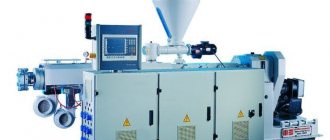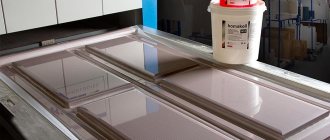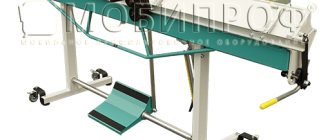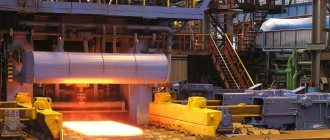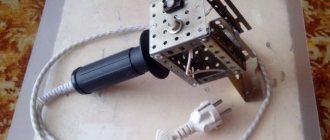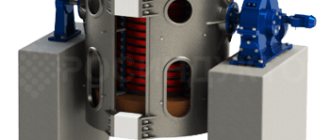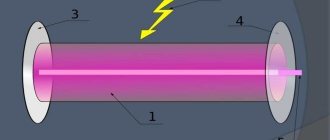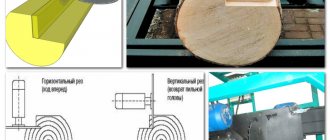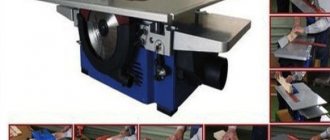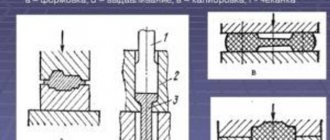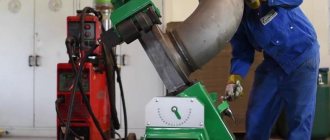Classification of melting furnaces for aluminum
Figure - Classification of melting furnaces for aluminum
- 1.00 – reverberatory furnace, stationary
- 1.11 – furnace with charge loading from above
- 1.12 – round oven
- 1.13 – furnace with loading well
- 1.14 – two-chamber oven
- 1.15 – oven with dry hearth
- 1.16 – high-speed melting furnace
- 1.17 – shaft furnace
- 1.21 – reverberatory furnace, tiltable
- 1.22 – tilting cylindrical furnace
- 1.23 – tilting oval oven
- 2.00 – crucible furnace
- 2.11 – gas crucible furnace
- 2.12 – electric crucible resistance furnace
- 2.21 – crucible induction furnace
- 2.22 – channel induction furnace
- 3.00 – rotary oven
- 3.10 – tilting rotary kiln
Making a crucible from clay
You can make a crucible from fireclay clay. This is an inexpensive option and also highly resistant to high temperatures. This clay is used for laying stoves and can be purchased at any hardware store. Fireclay clay can withstand temperatures up to 1600 degrees Celsius.
So, you will need fireclay clay (sold in bags in hardware stores), liquid glass (sold there) and ground fireclay. It can be bought or made from fireclay bricks.
In order to make a mixture from which a crucible will be fashioned in the future, take 7 parts of clay, 3 parts of fireclay and 10 tablespoons of liquid glass per liter of dry mixture. Fireclay and clay are mixed until smooth. After this, water is slowly added. In order not to spoil the workpiece, you can pour out part of the mixture, and if there is a large amount of water, add dry powder. You need to knead until the clay stops sticking to your hands.
Only after the clay of the desired consistency has been mixed can glass be added. When adding glass, you need to thoroughly knead everything until the clay stops cracking. It is best to add glass to a lump of clay and roll it into a roll, then fold it several times and repeat the procedure until it stops cracking. The material for the crucible is ready. Until the moment when it is used, it must be stored in several layers of cellophane.
There is clay, now to make a crucible you need to take a mold, the easiest way is to use a plaster mold. How to make such a form can be found on any website on plaster modeling. So, directly making the crucible.
Before you start sculpting, you need to knock all the air out of the clay; to do this, you can lay a newspaper on the floor and forcefully throw a lump on it several times, ten times will be enough. Now take a lump of clay and carefully press it into the bottom of the mold, after which the walls of the product are formed in small lumps. Their thickness can be controlled along the edge of the mold
It is very important to carefully press the clay into the mold so that no air cushions form there. After the crucible is molded, you need to make the inner surface smooth
To do this, just moisten the clay with water.
After this comes the moment of drying. The mold with clay is placed in a cardboard box and covered with a lid. After seven hours, all the water from the clay will evaporate and the shape of the future crucible will “shrink” a little, so getting it out of the mold is not particularly difficult. After this, the crucible continues to dry in the same box; as it dries, all defects will be eliminated by themselves and the pot will acquire a gray color. Sometimes small cracks may appear. They can be covered with wet clay. Next, the pots are fired at a temperature of 800 degrees in a muffle furnace. After firing, the crucible is ready for use.
Three classes of aluminum melting furnaces
Most often, so-called reverberatory (hearth) furnaces are used in the production of secondary aluminum. This type of aluminum melting furnace (1.00) has many modifications. All these modifications, one way or another, adapt the classic reverberatory furnace to special operating conditions and a special charge.
Crucible furnaces (2.00) are popular, especially in small industries.
Recycled aluminum producers widely use rotary furnaces (3.00) as melting furnaces, especially for processing scrap with a high specific surface area, such as aluminum shavings, as well as highly contaminated aluminum scrap.
The family tree of smelters shown in the figure relates specifically to the production of secondary aluminum. Some aluminum smelting technologies have very limited and specialized applications.
In addition, aftermarket equipment manufacturers use different equipment depending on the purpose of their products and the type of aluminum scrap they use.
Operating rules
Electric or gas furnaces for melting materials or hardening parts are high-risk devices.
Before starting work, be sure to check the reliability of the connection to the gas network or the insulation of the wires and the condition of the spirals. A reliable ventilation system must be provided in the room.
We install the stove on a heat-insulating stand. It is better to take several fireclay bricks and glue them together with heat-resistant glue.
We do not recommend working in clothes like those in the photo:
Only special clothing can protect you from burns when working with molten metal. Only split-leaf gloves comply with labor protection regulations. Clothes made of thick material. All areas of the body must be covered, shoes made of thick leather or a substitute. No slippers or flip flops.
Furnaces for secondary aluminum foundry
Recycled aluminum producers are generally divided into two categories. The first category includes industries that produce mainly casting alloys for manufacturers of aluminum castings, as well as aluminum for steel deoxidation. The raw materials for these are scrap and industrial waste from foundries. In English they are called "refiners". These productions, in addition to introducing alloying elements to refine a given alloy, use equipment to purify the aluminum melt and remove undesirable chemical elements and impurities.
Rotary melting furnaces are used by these aluminum scrap processors.
Foundries that produce aluminum castings from recycled cast aluminum widely use crucible furnaces - gas and electric, induction and resistance, both for melting and holding aluminum, and for pouring the aluminum melt into foundry molds.
Differences between homemade and factory units
To understand the difference, you need to take the purpose of using the equipment as a starting point. Home-assembled units are usually needed for periodic use (breaks can be significant), so the minimum cost, the ability to perform simple manipulations, and low maintenance requirements come to the fore.
If the results of smelting are used to earn money, it is more advisable to purchase a factory induction model - such equipment promotes accurate work, helps to accurately observe measurements, and reduces to zero the likelihood of unwanted impurities. The same equipment is difficult to do with your own hands - assembling an inductor, choosing a crucible , screen arrangement requires specialized skills. Not everyone can create a capacitor bank and generator.
Read also: Pre 7 hammer drill instructions
DIY crucible furnace
The ergonomic characteristics of stoves should not be overlooked. In artisanal preparations, they are given a minimum of resources; as a rule, such variations are inconvenient to use and are often dangerous due to the use of improvised materials. In the factory lines, proven technologies are used to ensure comfortable work, in particular, this concerns the configuration and rotating mechanism of the crucible. It is important that they create conditions to prevent injuries.
Brick construction
It is better to make it yourself using scrap materials. A mini forge made of 6 bricks is suitable for obtaining various parts that are used to decorate metal objects, buckets or other parts. The creation process can be divided into the following stages:
We create the body from fireclay bricks. Such a brick can withstand exposure to high temperatures for a long time
When choosing a brick, you should pay attention to the fact that it should not have damage or defects. This is because cracks will lead to heat loss. We create grate grate shelves from scraps of steel pipes
Steel pipes should be of small diameter. Fusible material options cannot be used. The grate is made from steel strips, the thickness of which is 4-6 millimeters. We twist the grate at an angle with a screw. The fuel can be coal or coke. Ignition is usually carried out using a blowtorch. You can also use a gas burner. A window under the nozzle must be created when using a blowtorch. This is because the forge emits a lot of heat, which can cause the lamp tank to explode.
This type of design, which you can quickly create with your own hands, should be used exclusively outdoors, since there is no umbrella with a chimney. During smelting, a large amount of combustion products is released.
When considering the question of how to make a forge for melting aluminum, we note the possibility of creating portable versions. An example is a portable version of the track, which with additional elements are installed on a common base. The lining is represented by fireclay marl with fireclay sand. Another design element can be called an air supply system to the track, for which you can use, for example, a manual siren. It can run on coke or charcoal.
Solid fuel forges
To figure out how to make a forge that runs on solid fuel, you need to study the instructions and decide on the type. A closed-type forge furnace is better suited for working on coal or wood. It is made at home from scrap materials. A charcoal forge does not require special equipment.
- Availability of refractory bricks.
- Injection burner.
- Hood.
- At the preparatory stage, drawings for the forge are developed.
- A cube is being made from bricks. There remains a cavity with a hole inside.
- Using reinforcement, the frame is secured.
- A burner is installed in one of the side bricks.
- There is a hood on top, which creates safe working conditions.
Figure 2: Drawing of a solid fuel forge
Making a forge for heating metal with your own hands makes it possible to adjust it to the necessary conditions. The material used must only be of high quality to ensure fire safety is maintained.
Waste oil furnace
Considering that petroleum products are expensive, it is beneficial to use a forge using waste oil. To make the forge during mining, parts that have served their useful life are used. After processing the furnaces, a significant drawback emerged - the spent mixture did not ignite well. To eliminate this problem, an additional compartment was built into the mining forge. Here the oil is preheated with coal or wood. To improve combustion, waste fuel passes through filters and diesel fuel or gasoline is added to it.
As a result, the mining forge has the advantages of a yellow flame and stable temperature.
You can make it yourself:
- It is made from fireclay bricks, dimensions: 85×48×40 cm.
- The vault is made in the form of an arch to maintain temperature.
- The body is completely covered with sheets of iron. A thickness of 1.5 mm is used on the sides, and the top and bottom are lined with 2 mm sheets.
- The supports are made from angles based on the weight of the structure.
Read also: Laser engraving machine for wood
Air is pumped into the chamber by a fan. A waste tank is installed on a hill. From it, the oil enters the chamber through a pipeline, where it is picked up by air, which moves under a pressure of 2 atm. The waste is broken up and fed into the nozzle.
Scheme of the furnace during development:
Principle of operation
Even a person with no blacksmithing experience can assemble a forge from six bricks with his own hands. The device can operate from the supercharging of a gasoline burner. Two bricks are placed flat on the ground - this will be the bottom. Two more are placed on them edge-on - these are walls. Moreover, the back of the bricks is reduced to limit heat loss. Their location can also to some extent regulate the temperature inside the working area. The last two bricks are placed on top - this will be the vault.
The grates can be made from a 4 mm steel strip. Two pieces of half-inch pipe are placed along the walls. Grate bars are placed on them. Moreover, they need to be wrapped in a “propeller” in the central part so that the air flow is captured by the planes and directed upwards, where the coal is located.
